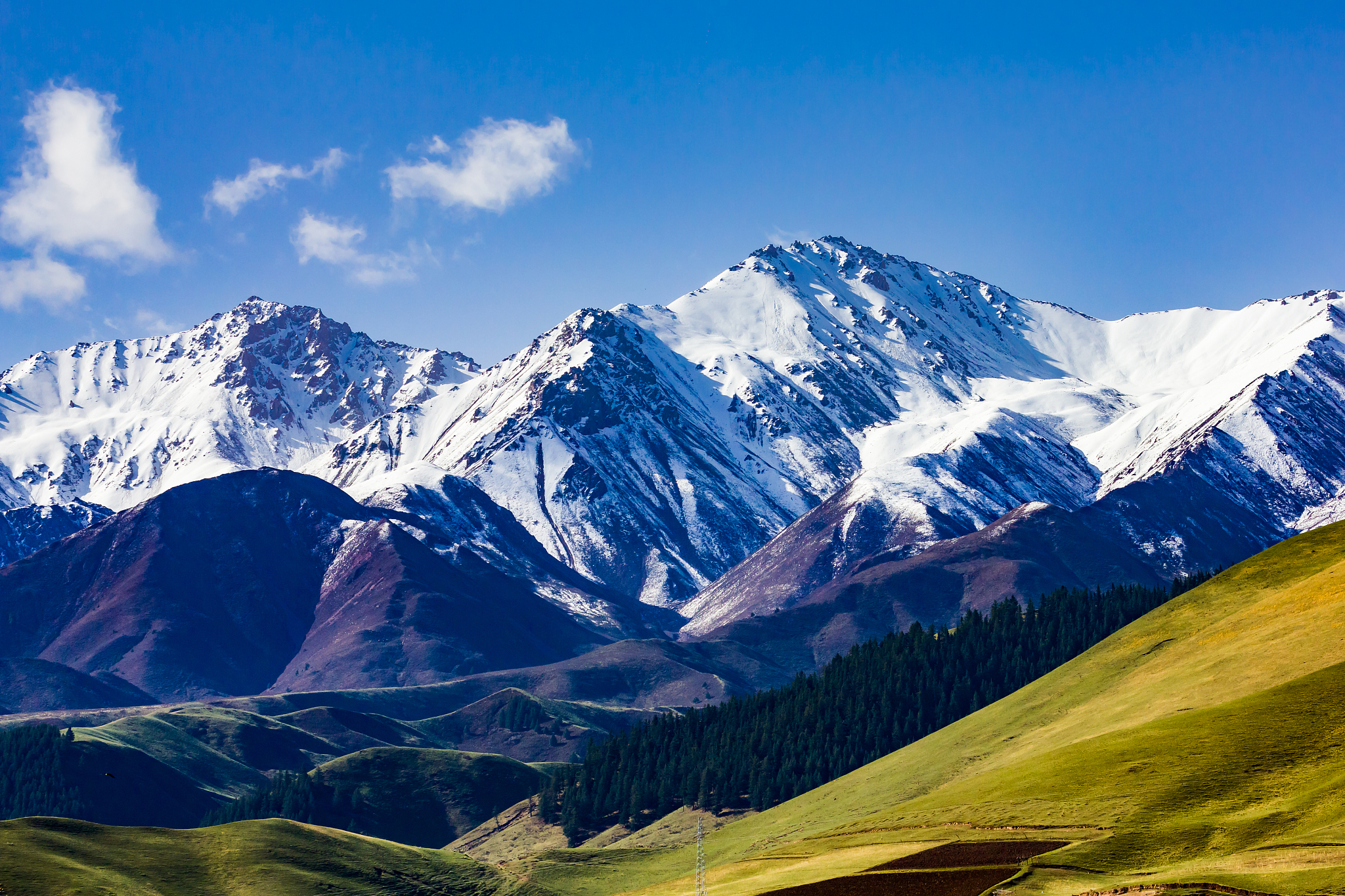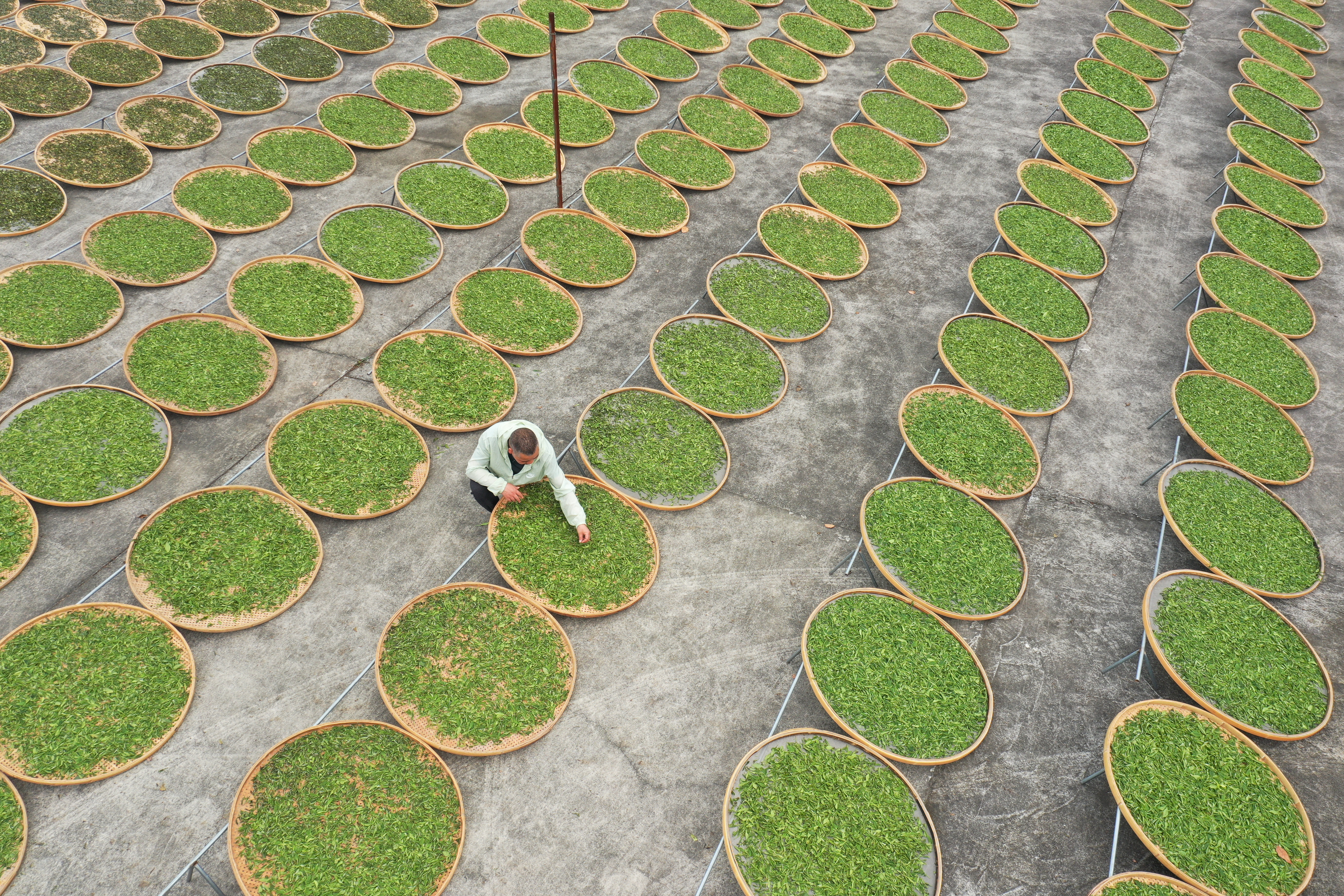Scientific Expedition to Protect Roof of the World

A scenic view of Qinghai-Tibet Plateau. (PHOTO: VCG)
By Wang Xiaoxia
On the Qinghai-Tibet Plateau, 8,830 meters above sea level, stands the world's highest weather station. Set up in May 2022 by Chinese scientists a few steps away from Mount Qomolangma, the world's highest peak, the station had its first visit from a scientific expedition on May 23, to gather information and conduct maintenance.
This year's Mt. Qomolangma scientific expedition is part of the second comprehensive scientific expedition on the Qinghai -Tibet Plateau, which was launched in 2017, focusing on water, ecology and human activities to reveal the mechanisms of environmental change, and optimize the ecological systems on the plateau.
Decoding climate change
The Qinghai-Tibet Plateau is known as the "roof of the world" and the "water tower of Asia." The impact of global warming on the glacier of Mt. Qomolangma is of great concern to researchers and the public at large.
The team drilled a new ice core sample from Mt. Qomolangma at 6,500 meters, which will provide abundant information for the research of climate change history in the region. Moreover, records of ice cores drilled by Chinese scientists show that the amount of heavy metals and persistent organic pollutants from human activities in the atmosphere of Mt. Qomolangma has increased since the Industrial Revolution.
"Climate and environment changes on the Qinghai-Tibet Plateau are closely linked to other parts of the world," said Yao Tandong, academician of the Chinese Academy of Sciences (CAS) and team leader of the second expedition to the Qinghai-Tibet Plateau, adding that advanced instruments such as the "Jimu-1" III-type aerostat, radar to measure glacial ice thickness and atmospheric turbulence observation systems have greatly improved the monitoring accuracy.
The vertical distribution of carbon dioxide and methane in the Qomolangma region has been measured for the first time using a helicopter and aerostat platform. CAS Academician Piao Shilong explained that continuous research on greenhouse gas changes in the Qomolangma region will provide a more comprehensive understanding of the plateau ecological and environmental changes and their linkage with global environmental changes, thus helping to optimize the plateau ecological barrier system.
From the altitude of 5,200 meters to 8,830 meters, there are eight weather stations to observe mainly air pollutants. New batteries developed in collaboration with the lunar exploration project will provide a reliable energy supply for the operation of instruments and equipment in the extreme environment near the summit, said An Baosheng, on-site commander of the Mt. Qomolangma expenditure.
Unravel evolution mystery
During March and April of 2023, the team also discovered new fossils of Himalayasaurus, an extinct genus of ichthyosaur. Ichthyosaurs are extinct Mesozoic Marine reptiles that dominated the ocean long before dinosaurs dominated the land.
In the 1960s, Chinese researchers collected two ichthyosaur fossil specimens in an expedition to Mt. Qomolangma. The giant ichthyosaurs with long mouths, sharp teeth and more than 10 meters in length were named "Himalayasaurus." However, the two specimens found in the 1960s are now in poor condition after repeated transport and repairs to reinforce them.
The newly discovered ichthyosaur vertebrae and ribs were well preserved with more complete and clear structure, while well-preserved Himalayasaurus fossils were rare in previous scientific expeditions, according to the research team from the Institute of Vertebrate Paleontology and Paleoanthropology of the CAS.
Based on a number of fossils found in the past decades, we can better understand the process of life evolution on the Qinghai-Tibet Plateau, said Wang Wei, an associate research fellow at the institute.
Li Meng, vice minister of science and technology, stressed the importance of this year's Mt. Qomolangma expedition, as it enriches and broadens the second comprehensive expedition on the Qinghai-Tibet Plateau. "I believe more and more 'unsolved codes' will be 'decoded'," said Li.
Keep exploring
"I never thought I conquered the mountains. Instead, I felt like the mountains were accepting me," said Chinese mountaineer Dong Hongjuan, who has become the first woman to conquer all 14 peaks above 8,000 meters on Earth. Dong's words can also reflect the goal of scientific expedition changing from "conquering" to "understanding" and "protecting".
In the 1950s and 1960s, mountaineering was the first goal, said Yao. With support from CAS, a Chinese mountaineering team reached the summit of Mt. Qomolangma from the north ridge on May 25, 1960, for the first time in human history.
Since the 1970s, China has carried out the first scientific expedition on Qinghai-Tibet Plateau, which lasted more than 20 years. From then on, scientists have been deepening their knowledge of the plateau, and ecological protection measures are carried out in accordance with their research results.
Decades have since passed. Compared to the first one, the second comprehensive scientific expedition may have advanced equipment, but the spirit of hard work is still passed on and has never changed, said Yao.


